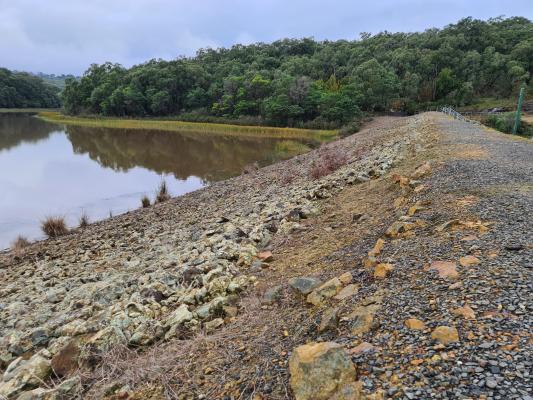
By Danielle Kutchel
The movement to retain the Beaconsfield Reservoir in its current form is gathering pace.
A series of events organised by the Save the Beaconsfield Reservoir Action Group and Officer and District Community Association (ODCA) have served to galvanise public support for the hidden gem of Cardinia, as residents add their signatures to a petition to stop Melbourne Water from going ahead with proposed changes to the dam and its wall.
The ODCA’s position is referred to as the “three Ws” of the Beaconsfield Reservoir: retain the current dam wall height; retain the current water level; and link existing walking tracks into the reservoir reserve.
The ODCA and action group argue this can be done whilst keeping the dam and low-lying communities safe in the case of significant rain events, retaining the fire-fighting and historical value of the dam and providing a new amenity for the community to enjoy.
However, Melbourne Water says the current dam wall is unsafe, and that the century-old structure – built in 1918 – is not up to current dam safety guidelines, as set by Australian National Committee of Large Dams (ANCOLD).
Melbourne Water have also said that the focus of their work at the reservoir is to improve the safety of those downstream in the event of potentially significant storms – where rain events could cause the reservoir to fill, spill and overtop.
Melbourne Water’s current plans are to reduce the height of the dam wall and reduce the water level in the reservoir to ensure the safety of those living downstream.
On Wednesday 24 March more than 60 people packed the Officer Recreation Reserve club rooms to hear more about the action group and association’s alternative plans for the reservoir.
This was followed by an open day for families at the reservoir on Sunday 28 March.
At the community meeting, residents of Officer and Beaconsfield discussed their preferences and concerns around opening the reservoir.
Some concerns remain in the community around the environmental impact of opening the reservoir to the public and how this will affect native flora and fauna.
However, those in attendance seemed generally in favour of retaining the dam in its current state.
Notably, there were no representatives from Melbourne Water present at the meeting.
Melbourne Water’s general manager asset management services Tim Wood said the organisation had offered to present at the public meeting, but the offer had not been accepted.
The ODCA said the offer had been rejected because the community organisation wanted to put its own position forward this time.
It’s understood there are plans for future opportunities for Melbourne Water and other stakeholders to present again to the community.
At the meeting, ODCA accused Melbourne Water of not conducting adequate community consultation on its plans for the reservoir.
The presenters said at community consultation sessions in May 2019, Melbourne Water had only presented on one option for the reservoir – partial decommissioning, by reducing the dam wall height by six metres and reducing the water level by about five metres – rather than the other three available options, including a safety upgrade to the wall to ensure it holds strong into the future.
While these options were listed, the group said they were not “presented” or discussed in detail with the community.
But Mr Wood said Melbourne Water had engaged in extensive community consultation around its plans for the reservoir.
“Melbourne Water has involved the community and stakeholders in the progress of this project for the past two years,” he said.
“We have worked directly with the Cardinia Environment Coalition, which is made up of 25 environmental groups, as well as the Friends of Beaconsfield Nature Conservation Reserve, Beaconsfield Progress Association and the Officer Community Association.
“We have also held drop-in sessions, conducted door-knocking, and distributed a number of community bulletins and we have engaged with DELWP and Cardinia Council to identify any future land use options that may need to be considered in our analysis.
Melbourne Water insists it has presented four dam safety options to the community: doing nothing; a partial decommissioning – the option Melbourne Water is currently seeking to move forward on; a full decommissioning and complete removal of the dam wall; and a safety upgrade involving buttressing of the wall.
Mr Wood said Melbourne Water would be happy to speak with any stakeholder group to discuss the works.
A petition by ODCA and the Save the Beaconsfield Reservoir Action Group to retain the reservoir as-is is currently circulating.
It gained 62 signatures following the meeting and 218 at the open day.
To find out more, visit Save the Beaconsfield Reservoir Action Group on Facebook.








